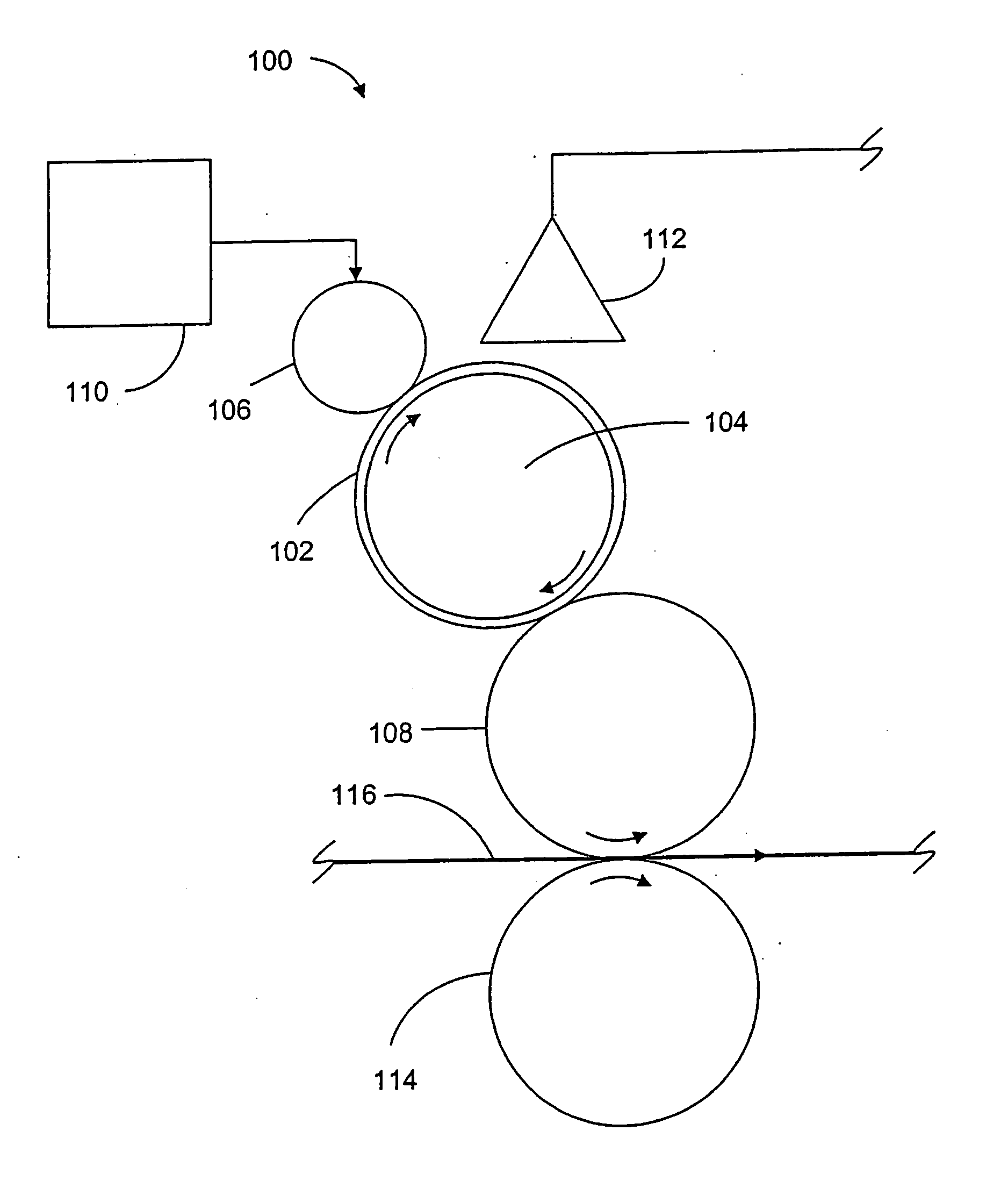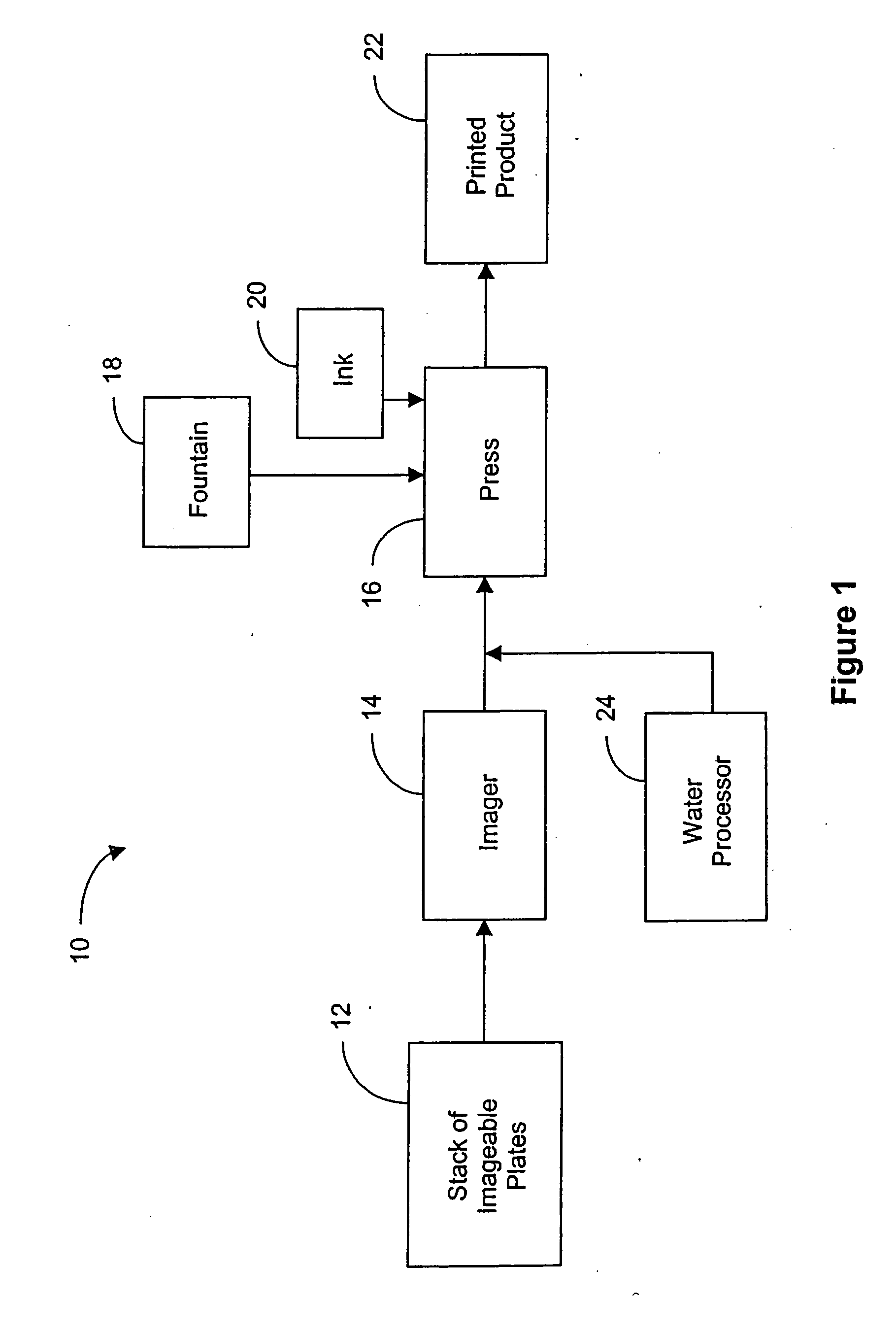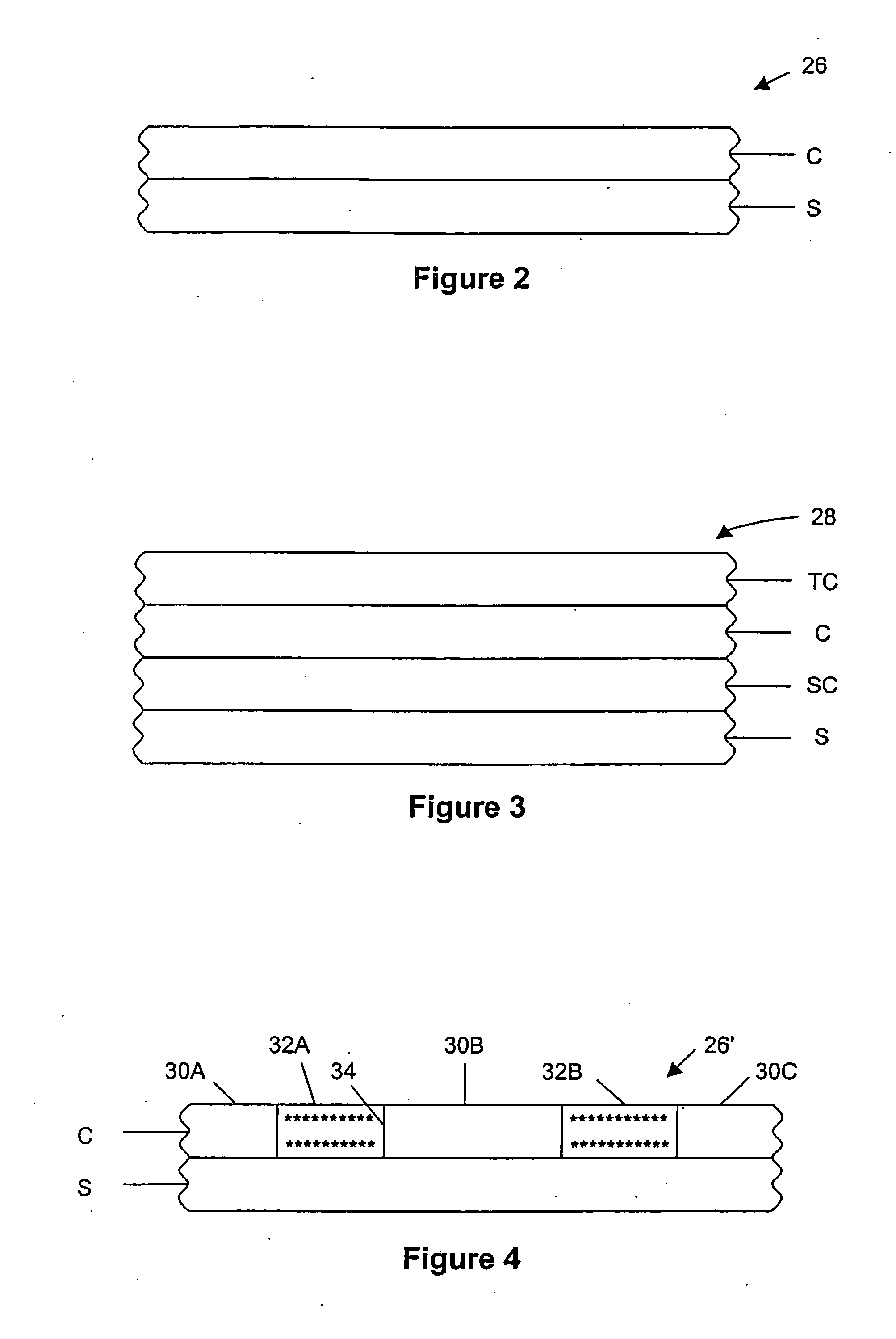Processless printing plates
a technology of lithographic plates and processing plates, which is applied in the direction of lithography, photosensitive materials, instruments, etc., to achieve the effects of reducing incidental dissolution, reducing the number of lithographic plates, and improving the adhesion and cohesion of imaged areas
- Summary
- Abstract
- Description
- Claims
- Application Information
AI Technical Summary
Benefits of technology
Problems solved by technology
Method used
Image
Examples
examples
[0056]In a first trial at a commercial newspaper printing facility, a negative working, photopolymerizable plate was imaged with IR radiation at 90 mj / cm2 and developed on press during startup as described above, then used in the normal manner to print over 100,000 high quality newspaper sheets. The plate was constituted as follows:[0057](a) grained, hydrophilized aluminum substrate[0058](b) imageable coating comprising the raw materials[0059](i) organic solvent[0060](ii) polyvinyl butyral polymer resin[0061](iii) penta functional acrylate monomer[0062](iv) pigment dispersion[0063](v) stabilizer[0064](vi) IR dye[0065](vii) organo-borate catalyst[0066](vii) onium salt catalyst[0067](viii) partially water soluble additive (DTTDA)[0068](c) PVOH topcoat
[0069]After thermal imaging, the plate was post-heated. It is believed this step produces further cross linking in the imaged areas but not in the unimaged areas. After cooling, the topcoat was washed off with tap water. Several hours aft...
PUM
| Property | Measurement | Unit |
|---|---|---|
| pressure | aaaaa | aaaaa |
| time | aaaaa | aaaaa |
| cohesion | aaaaa | aaaaa |
Abstract
Description
Claims
Application Information
 Login to View More
Login to View More - R&D
- Intellectual Property
- Life Sciences
- Materials
- Tech Scout
- Unparalleled Data Quality
- Higher Quality Content
- 60% Fewer Hallucinations
Browse by: Latest US Patents, China's latest patents, Technical Efficacy Thesaurus, Application Domain, Technology Topic, Popular Technical Reports.
© 2025 PatSnap. All rights reserved.Legal|Privacy policy|Modern Slavery Act Transparency Statement|Sitemap|About US| Contact US: help@patsnap.com



